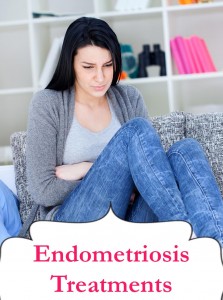By Jeffery Cherney, MD – Obstetrician/Gynecologist

Endometriosis is a condition where tissue that normally grows inside the uterus (the endometrium) is found outside of the uterus. The most common places where endometriosis occurs are in the pelvis and on the uterus, ovaries and fallopian tubes. Endometriosis has also been found in distant places such as the lungs and intestines. There is no cure for endometriosis, and it can be chronic and recurrent.
It’s A Mystery
The cause of endometriosis is not known, but there are several theories. A common theory is that some menstrual blood and endometrium flows backwards from the uterus through the fallopian tubes and into the pelvis during a menstrual period. This tissue then grows where it lands. This is called the retrograde menstruation theory.
Some women with endometriosis have no symptoms. For those who do, the most common symptoms are pain in the pelvic area, especially before or during the menstrual period, and difficulty getting pregnant. Pelvic pain can occur between menstrual periods with pain worse during the period, during or after sex, or with bowel movements. Keeping a diary of your symptoms can help your doctor determine if your pain is from endometriosis or some other condition.
Although your doctor might suspect that you have endometriosis based on your symptoms, the only way to know for sure is to have surgery. A common procedure to diagnose endometriosis is laparoscopy, an outpatient surgery where small incisions are made in the abdomen, and a lighted scope is placed so the endometriosis tissue can be seen and treated. Based on how much endometriosis is seen, it can be categorized from mild to severe. The symptoms of endometriosis do not necessarily correlate with the severity of the endometriosis seen during surgery.
Treatment Options
There are several treatment options for women with endometriosis. The best treatment depends on your symptoms and future plans for pregnancy.
- Nonsteroidal anti-inflammatory drugs (NSAIDs) are medications such as ibuprofen and naproxen. They can help relieve endometriosis pain by stopping the release of prostaglandins, which are responsible for painful menstrual periods. NSAIDs do not affect the growth of endometriosis.
- Hormonal birth control treatments, including birth control pills, and the patch and vaginal ring, can help because they reduce heavy menstrual bleeding. They are often used continuously (skipping the placebo pills) to reduce the number of periods and have less pain and bleeding during each period. Progestational methods (which contain a synthetic form of a natural hormone called progesterone) may also be effective. These can be used for women who get inadequate pain relief from, or cannot take, hormonal medications that contain estrogen.
- Gonadotropin-releasing hormone antagonists (GnRH-a), such as Lupron, are medications that work by blocking the production of estrogen by the ovaries, thus shrinking the endometriotic implants. This treatment reduces pain in over 80 percent of women. Since this causes a temporary menopausal state, side effects such as hot flashes and vaginal dryness can occur. Using a low-dose hormonal add-back treatment can help alleviate these symptoms. Because women can lose bone density with long-term treatment, GnRH-a therapy is usually used for no more than 12 months.
- Surgery might be an option if you have severe pain, if medications are ineffective in controlling pain, if there is a pelvic mass or if you are having trouble getting pregnant. The goal of surgery is to remove endometriosis implants and scar tissue. Surgery will help most women, but there is a good chance that the pain will come back unless you take some form of medical treatment after surgery. You and your doctor can determine the best surgical treatment for you.
Your healthcare provider is the best source of information for questions and concerns about your health problems. Don’t suffer in silence…the physicians at Women’s Health Specialists are experts in the diagnosis and treatment of endometriosis and other women’s care needs.